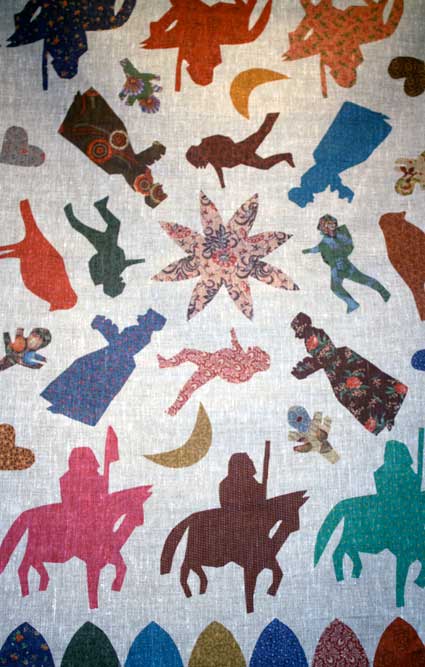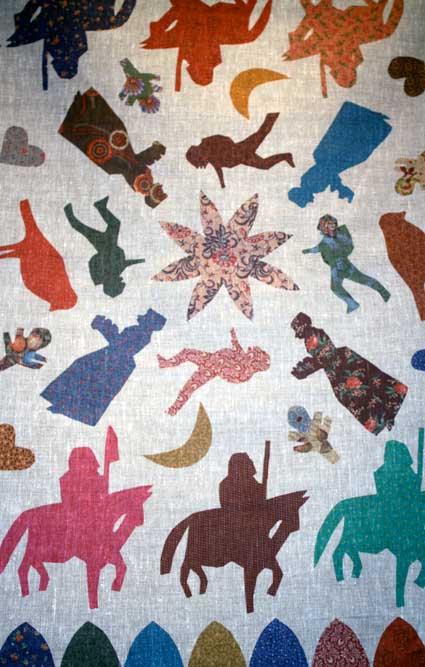
Allison Smith, Untitled 2010 (detail), edition with Lapis Press and LACMA
Artist studios often reflect the processes and working habits of the artists who inhabit them, but it is with less frequency that these spaces serve multiple functions that involve histories outside the familiar one of quiet, solitary artistic production. So I was pleasantly surprised when I visited artist Allison Smith in Oakland, California, to find not only a studio but also a general store and meeting space that she calls SMITHS. As she describes on her website, “SMITHS is a project inspired by the history of general stores as intimate public spaces of exchange.” It is in this place, named after the artist but more generally after smith (or maker), where Allison and I first discussed her doing a project for LACMA.
Smith grew up in Virginia, perhaps the epicenter of historical reenactment, around re-enactors, whose relentless quest for authenticity in the fabrication of appropriate costumes and other forms of material culture inspired in her a deep concern for what it means to recreate objects from a particular historical moment and what it means to “perform” history.
As part of the Artist Editions program here at LACMA, led by Director of Special Projects Erin Wright, we invited Smith to create two new editions to coincide with American Stories: Paintings of Everyday Life, 1765–1915, both of which can be found in the shop located inside the exhibition. In addition to her collaboration with Los Angeles-based designer Gregory Parkinson, a scarf inspired by designs and textures from costumes and textiles depicted in the paintings in the exhibition’s paintings, Smith created a print with Lapis Press.
The print design was inspired by a quilt that Smith saw at the Shelburne Museum in Vermont, known for its impressive collection of American folk art and quilts. The quilt, made by a convalescing Civil War veteran, was a gift of Florence Peto, who as it turned out wrote a lengthy description of it in her 1949 book American Quilts and Coverlets. Peto wrote: “Toward the close of the Civil War a wounded, discharged Union soldier decided to make a quilt to soothe his shattered nerves; he did not quite get away from it all for his quilt has silhouette figures of armed soldiers on horseback and afoot marching grimly around an intermediate border; in the central group foot soldiers surrounded women who appear to be offering refreshment on trays.”
Consistent with her past work, the limited-edition giclee print that she created for LACMA starts with a historical reference point, in this case the use of craft, whether stitchwork or knitting, for convalescing soldiers—a past tradition that challenges our modern definitions of masculinity and war. Secondarily, it is a hybrid of the handmade and the digital, in her words, made “using unique scanning technology, updating the tradition of ‘cheater cloth,’ or printed material meant to look like several different fabrics, usually calicos, appliquéd or patch-worked together.” Here patchwork and appliqué describe techniques for stitching together disparate materials, but these terms are equally descriptive of the ways in which Smith brings together historical craft forms to expose our most pressing contemporary preoccupations.
Rita Gonzalez, Assistant Curator, Contemporary Art



